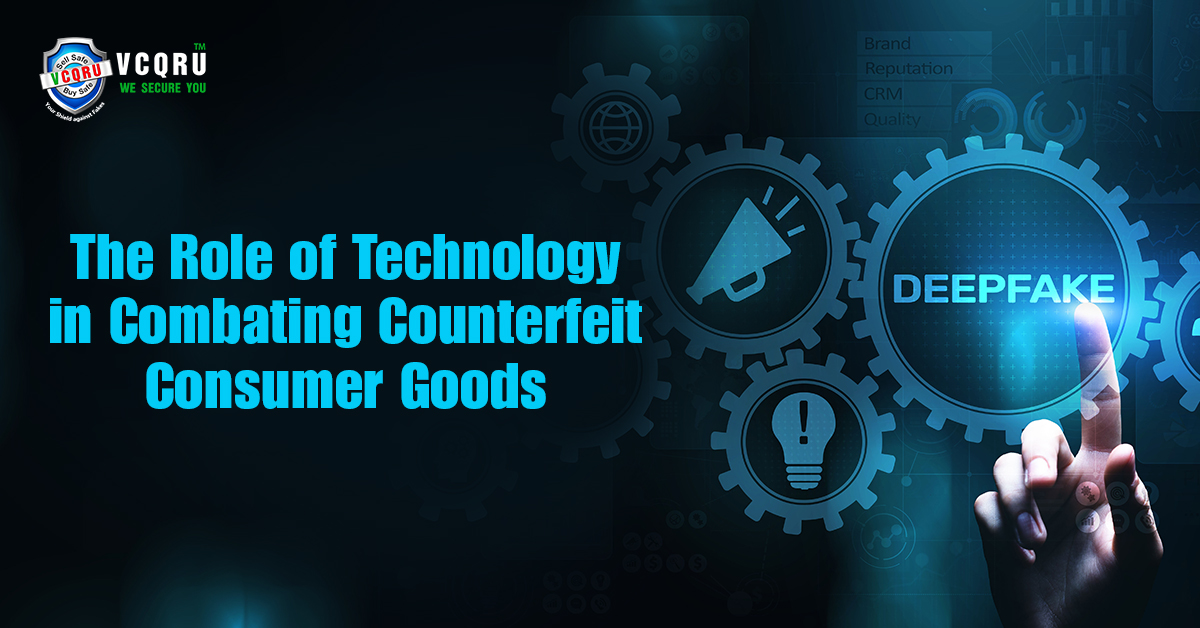The Role of Technology in Combating Counterfeit Consumer Goods
Jul 24, 2024

Counterfeit consumer goods are a growing menace that is affecting industries worldwide and due to this billions of revenue losses. These types of products not only undermine brand reputation but also pose serious risks to consumer health and safety. With advancements in technology, companies are finding innovative ways to combat this global issue. From advanced tracking systems to innovative verification methods, technological solutions are proving to be effective in identifying and preventing the spread of counterfeit items. This article explores the various technological advancements that are being deployed to combat this growing problem.
The Scale of the Problem
Counterfeit consumer goods are a global issue and encompass a wide range of products, from luxury items and electronics to pharmaceuticals and everyday household items. According to the OECD, counterfeit and pirated goods account for approximately 3.3% of global trade, which translates to hundreds of billions of dollars. And According to the International Chamber of Commerce, the global economic value of counterfeiting and piracy was $4.2 trillion by 2022.
Advanced Technologies Fighting Counterfeiting
Today's mostly manufacturing industries are implementing advanced technologies in the fight against counterfeit consumer goods. These systems utilize unique identifiers, such as serial numbers or QR codes, which can be scanned to verify the authenticity of a product. And in all these Blockchain technology has revolutionized tracking by providing a decentralized and tamper-proof ledger of a product's journey from manufacturer to consumer. Here are some technologies:
1. Blockchain Technology
Blockchain technology is a revolutionary tool in the fight against counterfeit consumer goods by creating a decentralized and immutable ledger. Blockchain ensures that every transaction and movement of a product is recorded transparently and securely throughout the supply chain. Consumers and retailers can verify the authenticity of a product by scanning a QR code or NFC tag linked to the blockchain. This immutable record makes it extremely difficult for counterfeiters to introduce fake products into the supply chain and reduces the risk of purchasing counterfeit goods and increases consumer confidence.
2. Artificial Intelligence (AI) and Machine Learning
Artificial Intelligence (AI) and machine learning algorithms are powerful tools that are utilized to detect counterfeit consumer goods by analyzing patterns and anomalies in product listings, packaging, and supply chain data. AI can quickly identify discrepancies that may indicate counterfeit activity, such as unusual shipping routes or inconsistent product descriptions. For instance, AI can monitor online marketplaces and social media platforms to identify counterfeit listings and alert brand owners in real-time.
3. Internet of Things (IoT)
The Internet of Things (IoT) is another powerful tool that plays a crucial role in securing the supply chain against counterfeit consumer goods. IoT-enabled devices such as smart sensors and GPS trackers, provide real-time data on the location, temperature, and condition of products. These devices can communicate with each other and with central databases to ensure that each product's history is accurately recorded and verified.
4. Radio Frequency Identification (RFID) and NFC Tags
Radio Frequency Identification (RFID) and Near Field Communication (NFC) tags are widely used for product authentication. These tags can be embedded in products or packaging and contain unique identifiers that can be easily scanned using a smartphone or dedicated reader. By scanning these tags, consumers and retailers can instantly verify the authenticity of the product. This technology is particularly effective for high-value items such as electronics, luxury goods, and pharmaceuticals.
5. Holograms and Security Labels
Holograms and security labels are traditional
anti-counterfeiting measures that have evolved with advanced technology. These labels are difficult to replicate due to their complex designs and the use of advanced printing techniques. Holograms can include microtext, color-shifting inks, and other features that are challenging to duplicate. Additionally, some security labels incorporate QR codes or serial numbers that can be verified online, adding an extra layer of protection.
6. Digital Watermarking
Digital watermarking involves embedding invisible marks or codes within the product or its packaging. These watermarks can only be detected using specialized equipment or software, making it difficult for counterfeiters to replicate. Digital watermarking can be used on a variety of products, from textiles to electronics, ensuring that the authenticity of the item can be verified throughout its lifecycle.
7. Secure Cloud Platforms
Cloud-based platforms are being used to store and manage product data securely. These platforms facilitate the sharing of information across the supply chain, ensuring that all stakeholders have access to accurate and up-to-date product information. Secure cloud platforms also enable remote verification and authentication, making it easier for consumers to check the legitimacy of their purchases.
8. Consumer Engagement and Education
Technology is not only helping brands and authorities combat counterfeit consumer goods, but it is also empowering consumers to make informed purchasing decisions. Mobile apps and online platforms enable consumers to verify the authenticity of products before making a purchase. By scanning QR codes or entering serial numbers, consumers can access detailed information about a product's origin, manufacturing process, and supply chain history.
The Future of Anti-Counterfeiting Technology
As counterfeit consumer goods continue to evolve, the need for advanced
anti-counterfeiting technologies will continue to grow. Future advancements may include the use of quantum computing for even more secure encryption, advanced biometrics for product authentication, and further integration of AI and IoT to create smarter and more resilient supply chains. Additionally, the integration of Internet of Things (IoT) devices can enhance real-time monitoring and tracking of products throughout the supply chain. Collaborative efforts between governments, businesses, and technology providers will be essential in staying ahead of counterfeiters.
The fight against counterfeit consumer goods' role of technology is crucial and multifaceted because it's an ongoing battle. By leveraging advanced tracking systems, Blockchain, RFID, AI, IoT, and other advanced technologies brands can protect their products, maintain consumer trust, and safeguard their reputation. As these technologies continue to develop, they will provide even more robust solutions to ensure that counterfeit goods are identified and eliminated from the market.


